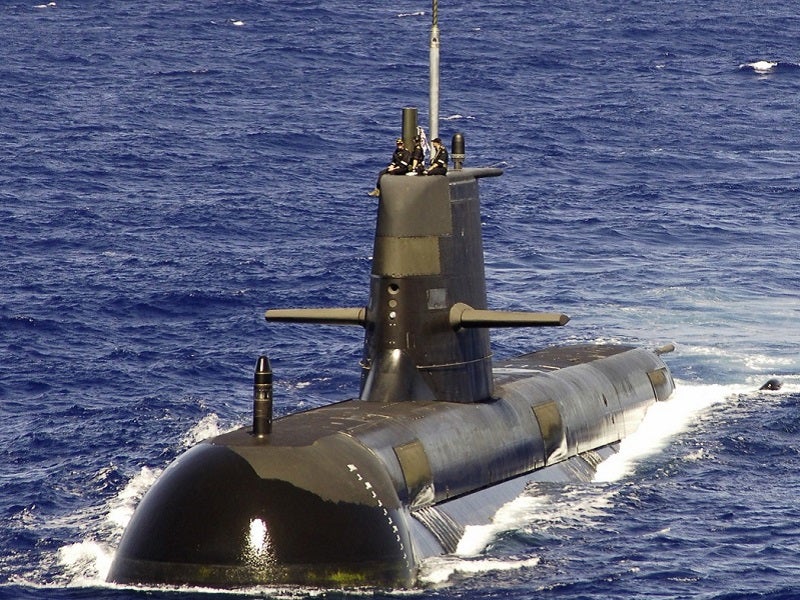
Swedish OEM Saab would “absolutely” seek to be a part of any competition to fill a potential gap between the out-of-service date (OSD) of the Royal Australian Navy’s (RAN) Collins-class conventional submarines, and the future introduction of a new class of nuclear-powered fleet hunter killers.
Australia’s fleet of six Collins-class diesel-electric submarines, which were designed by Kockums, now owned by Saab, in the 1990s and early-2000s, first entered service with the RAN in late-1990s. The type is subject to a rolling improvement programme in a bid to maintain their relevance in the Asia-Pacific region.
However, the length of time it requires to design and manufacture submarines meant that a replacement class was being considered by the mid-2000s, with an extensive procurement effort eventually deciding on a conventionally-powered French Barracuda design from Naval Group in 2016.
By 2021, a series of delays in the programme and frustration from the Australians had led to Canberra ditching the French design and instead turning to the UK and US, forming a new security alliance dubbed AUKUS, which would work to produce a fleet of nuclear-powered submarines for the RAN, derived by US and UK technology.
Building a nuclear-powered submarine is an extremely difficult undertaking, with the UK’s latest Astute class deemed akin in complexity to building NASA’s space shuttle. Boat one of the UK build, HMS Astute, was laid down in 2001 and only entered service with the Royal Navy in 2010.
With the Collins class expected to begin leaving service by the middle of the decade, there looks to be an inevitable dip in Australian submarine numbers. Therefore, a decision will be required by Canberra as to whether it fills the gap between the OSD of the Collins class and the future UK-US-derived nuclear-powered fleet submarines, or potentially lease or acquire a small number of conventionally powered hulls as a stop-gap solution.
Saab, which has extensive experience working with the RAN, are one of a clutch of European yards that could offer a solution, either through further extending the service life of the incumbent class, or the building of an interim solution.
The Swedish Navy operate the Gotland and Sodermanland class of conventionally powered submarines manufactured by Saab’s Kockums business unit. The latter class of two boats will be replaced by the future Blekinge (A26) class, currently under manufacture.
Speaking during Saab’s Q2 market performance briefing on 21 July, CEO Micael Johansson said that the company “was looking” at what the gap between the Collins and the RAN’s future nuclear submarines would be.
“In my view there will be a gap. Potentially there will be a need for a gap filler, call it ‘son of Collins’ or something else, but we absolutely want to be in that [competition],” Johansson said.
Johansson said that Saab’s existing work on the Collins class meant there was already a core industry capacity in Australia that would be able to “build that capability locally”, with the transfer of technology to Australia to support such a move.
Sales growth in Saab’s Kockums business area was down for Q2 2022 compared to the same period last year, although the quarter had seen the keel laying ceremony of the first of the Blekinge submarines for the Swedish Navy, and a contract to modify the third Gotland-class submarine.



